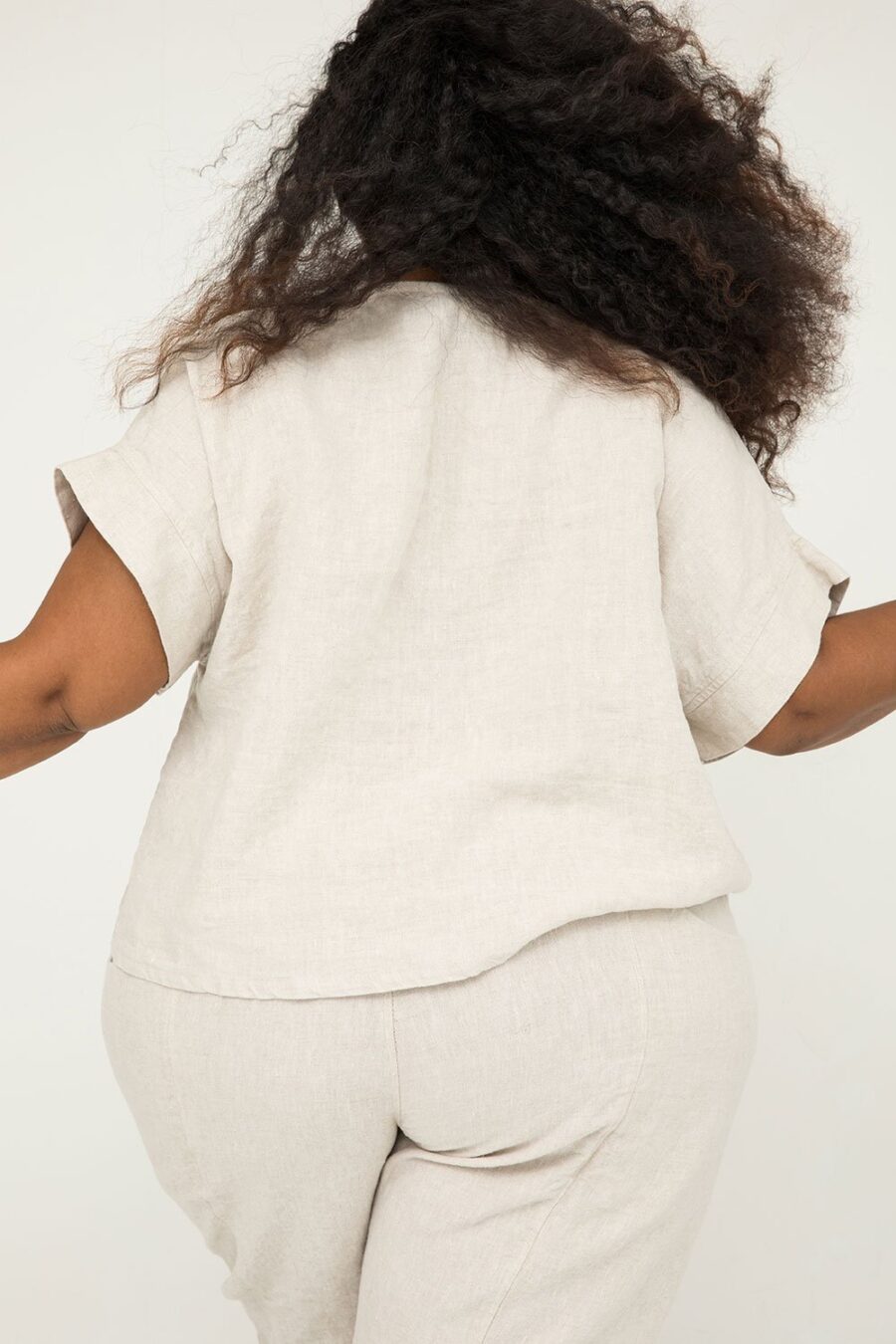
What Real Inclusivity Should Look Like In The Ethical Fashion Industry
I was eight years old when I started praying that God would make me look like someone else.
It started with the the Limited Too catalogs that were delivered to my house every month. These catalogs were full of blonde and brown-haired White girls, smiling on playgrounds in sparkly bermuda shorts and frilly t-shirts.
I knew better than dare to wish I looked like these girls. My sights were set, rather, on the biracial models. These models had light brown skin and curly hair that fell effortlessly over their shoulders, while I had a darker complexion and kinky curls that seemed stiff and brittle in comparison. And yet, these biracial models were often the only brown girls in these magazines at all—the only models in which I could see any semblance of myself.
“The tokenization of biracial models felt like an attempt to lump a diverse audience into one category. This poor attempt at representation left me feeling unseen and unrepresented.”
The assumption of the brand, more than likely, was that Black girls like me could identify with these models in the same way that biracial girls could. The tokenization of these biracial models felt like an attempt to lump a diverse audience into one category. This poor attempt at representation left me (and no doubt many other young girls of color) still feeling unseen and unrepresented.
Many fashion brands continue to prioritize biracial, often lighter skinned models when scouting for “diverse” talent. Amandla Stenberg, in an interview last year with Variety, pointed out a parallel phenomenon in the film industry, saying, “Something interesting has happened with me and Yara [Shahidi] and Zendaya — there is a level of accessibility of being biracial that has afforded us attention in a way that I don’t think would have been afforded to us otherwise.”
“There is still a hierarchy of who gets to be at the forefront of representation. This is why the “diversity” we often see in the fashion industry still feels incredibly homogenous.”
Attempts to promote diversity in the entertainment and fashion industries have historically prioritized faces, voices and bodies that are palatable to White consumers. There remains a hierarchy of who gets to be at the forefront of representation. This is why the “diversity” we often see in the fashion industry still feels incredibly homogenous. Brands seem to treat diversity initiatives as another box to check off, or merely as an aesthetic trend to follow.
This hierarchy of representation goes beyond race alone. When we talk about representation in fashion, racial diversity only scratches the surface. I cannot imagine how many other young girls must’ve looked at similar catalogs growing up, wishing they could see someone with their body type, or someone wearing a hijab, or someone with a differently-abled body, or someone who was not cisgender. Not to mention people who find themselves at the intersection of multiple identities, who are, in many ways, forced to cling to the sliver of themselves that is represented in the media because the fullness of themselves is so rarely visible in the mainstream.
“People who find themselves at the intersection of multiple identities are forced to cling to the sliver of themselves that is represented in media because the fullness of themselves is so rarely visible in the mainstream.”
The Role Of Inclusivity In Ethical Fashion
The ethical and sustainable fashion space is not exempt from these criticisms. Though many of the ethical brands we love and support have begun to represent racial diversity, there is still much work to be done to be more inclusive of different body types.
The recent outcry from the ethical fashion community following the Jesse Kamm/Madewell controversy highlighted that there is much to be done about body-inclusivity in the ethical fashion space. What started out as an accusation from Jesse Kamm that Madewell was using her name as a keyword to promote their products, turned into a series of call-outs about Kamm’s lack of inclusive sizing in her own brand from the ethical fashion community. Ethical fashion blogger Shannon Buckley summed up her frustrations with Jesse Kamm’s alleged refusal to offer more inclusive sizing in an Instagram post, saying that as a slow fashion, small business enthusiast, she would “happily tout the worthiness of inclusive fast fashion alternatives (as well as inclusive slow fashion alternatives) any day.”
“For brands with ethical and sustainable practices at the forefront of their mission, the need for radical inclusivity is all the more pressing. Brands will not successfully shift consumers’ shopping habits towards more conscious brands if they refuse to represent the diverse array of consumers that exist.”
The ordeal simply shows that inclusivity should be expected of ethical and sustainable fashion brands. Consumers are calling out brands who refuse to offer inclusive sizing, and fail to represent a variety of models in their brand imagery. For brands with ethical and sustainable practices at the forefront of their mission, the need for radical inclusivity is all the more pressing. Brands will not successfully shift consumers’ shopping habits towards more conscious brands if they refuse to represent the diverse array of consumers that exist.
Brands must shift from the use of palatable diversity as a means of being trendy, towards radical inclusivity as a core value that furthers the mission of the ethical fashion industry as a whole. This means, doing more than the bare minimum of including a token Black or Brown model in campaigns.
Radical inclusivity is about continually asking how we can cast the net wider, opening the space to many more walks of life. It’s about getting to a place where what we consider to be the “norm” in the fashion industry is characterized by a variety of skin tones, body types, gender expressions and ages. We must also do a better job of representing folks at the intersections of these identities.
“Brands must shift from the use of palatable diversity as a means of being trendy, towards radical inclusivity as a core value that furthers the mission of the ethical fashion industry as a whole.”
The work of inclusivity is hardly ever finished. There is no such thing as being “too inclusive,” and that is why there’s always room for improvement. It is also important that instead of becoming defensive when called out about lack of inclusivity in a certain area, that brands remain open and attentive to what their audiences have to say.
Humility, is perhaps the most important virtue when it comes to conversations surrounding inclusivity and representation in the fashion industry. Systems and standards of beauty have kept many locked out of the industry for decades, and we are only now beginning to do the work to change things. The best we can do is listen to the voices of those who feel underrepresented and make adjustments where necessary.
Header image from Elizabeth Suzann
RELATED READING
Celeste M. Scott is the Social Media Coordinator at The Good Trade. She is a writer and photographer who is passionate about film and Internet culture. She can often be found sifting through the racks at her local Savers. You can find her work on her website and Instagram.
